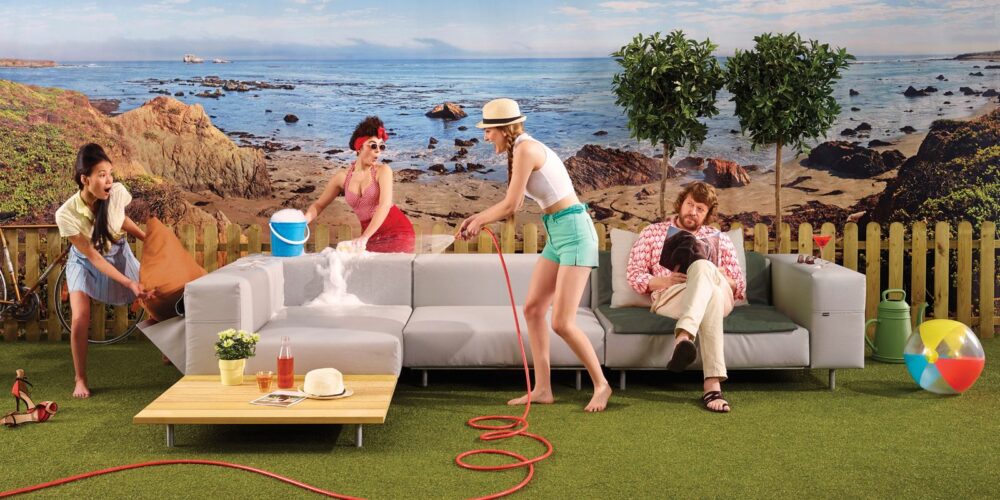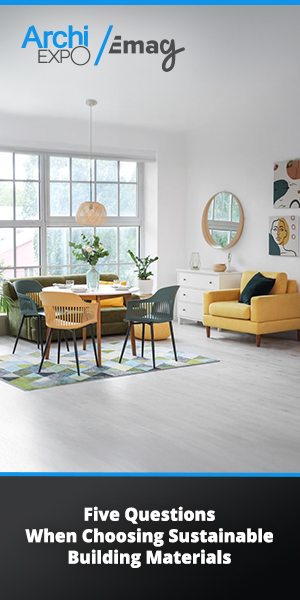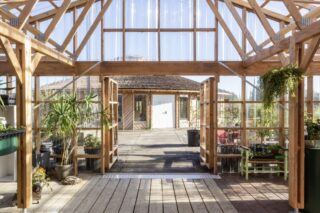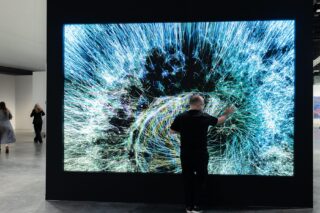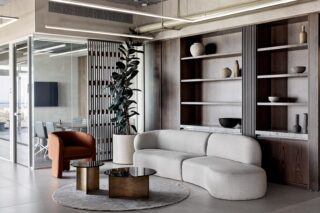Extremis channels laziness and aluminum into radically efficient outdoor furniture built for the future of living.
In a world where outdoor spaces are no longer afterthoughts but critical extensions of architecture, Extremis is designing furniture and scripting new behaviors. From zero-waste aluminum forms to modular social engines like the Panigiri table, this Belgian studio builds for connection, not decoration. Founder Dirk Wynants believes in designing like a lazy person—but the kind of lazy that rewires how space, comfort, and climate resistance come together.
Welcome to the design lab where sunbeds become benches, sofas outsmart the weather, and being “useful” is only the beginning.
Origins: Where Carpentry, Curiosity, and Context Collided
What happens when a trained interior architect with carpentry in his blood and a sharp eye for gaps in the market gets frustrated with every outdoor table he sees?
He builds his own—and launches an international design brand in the process.
That’s the story of Dirk Wynants, who, in rural Belgium in 1994, crafted a round table from wood and metal with a radical idea at its core: furniture should be both useful and unifying. Trained as an interior architect, he summoned his carpentry roots, his design education, and an introduction to the metal business through his family-in-law (his wife Hilde is the daughter of a metalworker).
Called Gargantua, the table design featured four adjustable-height benches orbiting a single tabletop—elevating not just people, but the idea of outdoor togetherness. Gargantua consists of four benches orbiting a round table, easily adjusted in height and fit.
What began as a side project quickly turned into Extremis, a brand that sees outdoor furniture as “tools for togetherness”—solutions with social purpose, material logic, and emotional staying power. Simple yet ingenious, Gargantua, Extremis’ very first creation is one of the firm’s best-selling products up to this day.
Headquartered in Poperinge, near the French border, Extremis has grown into a global voice in outdoor design.
The Market Before and After: Getting In When No One Was Looking
“I started Extremis with a tiny black-and-white printer, a bit of software, and a borrowed computer,” says Wynants. “We had no funds. That meant we couldn’t compete where big companies already were—we had to go where they weren’t.”
In the early ’90s, outdoor furniture wasn’t considered design-worthy. It was cheap, plastic, disposable—even in luxury homes. Wynants saw an opening: a completely underdeveloped category just waiting to mature. It wasn’t about being ahead of the curve, although he didn’t believe the market was entirely ready for outdoor furniture.
“If you’re too early, you don’t survive. If you’re too late, there are already too many strong competitors. But we timed it exactly right—just as outdoor living started to mean something.”
Today, the landscape has changed dramatically. Once a private domain, outdoor space has gone institutional—and Extremis is right at the center of that shift. Now, two-thirds of their products go to non-residential clients: office campuses, hospitality, healthcare, and education.
“The idea of outdoor space as just a smoking zone is over,” Wynants says. “We’ve become so productive digitally, we now need environments that offset that—places where people can reconnect, decompress, and refocus. And that’s not going to happen around a cheap resin chair.”
Extremis didn’t just evolve with the market—it helped push it there.
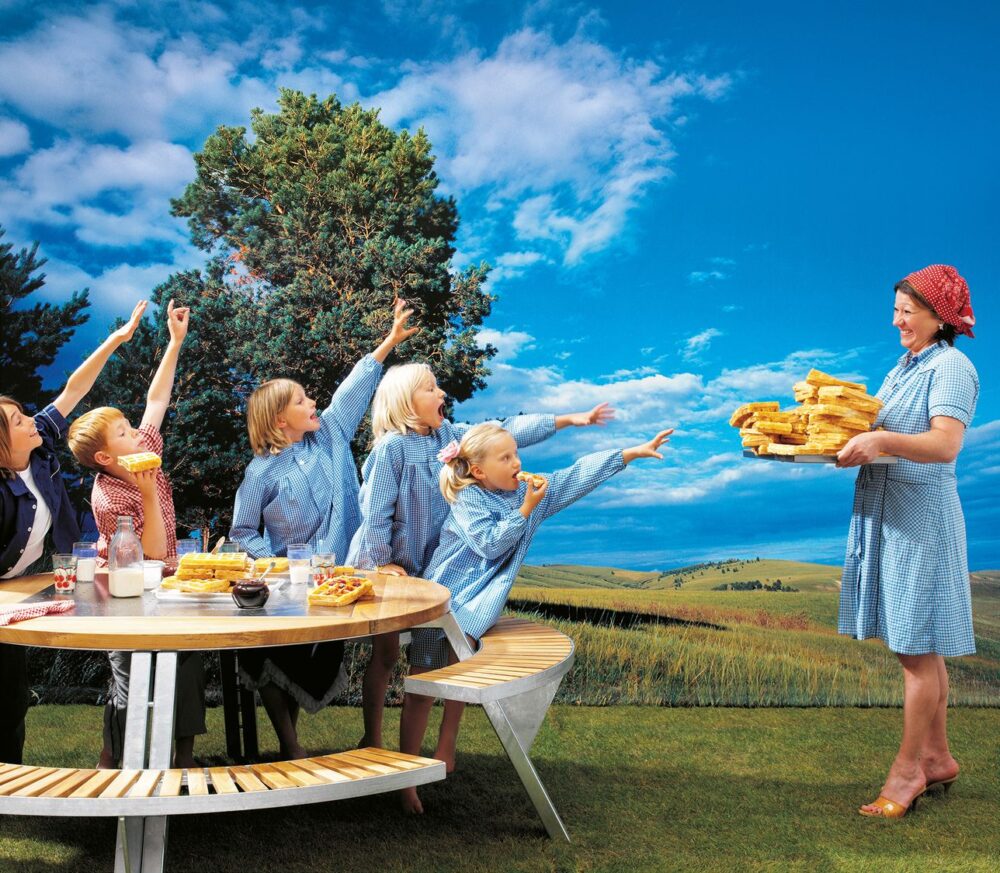
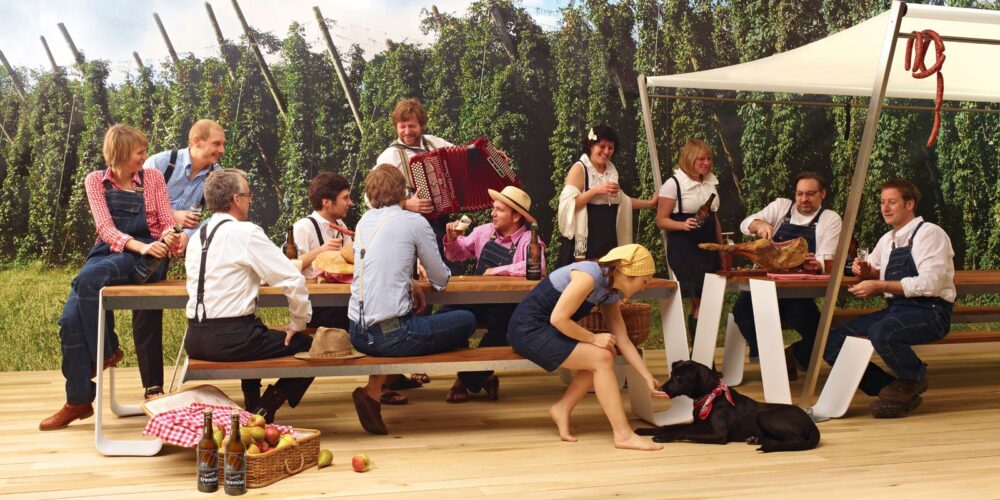
Outdoor Furniture Requires a Different Process
In 2014, Extremis launched what it describes as “the most weather-resistant and comfortable lounge set ever made”: the Walrus, a range of modular seating that withstands the elements without covers. Offering warmth and comfort thanks to blankets and extra pillows in the built-in storage compartment, it is fit for every season.
Sofas are a good example of how designing outdoor furniture requires a completely different process from the start.
“Outdoor sofas either need covers or the cushions to be taken inside when not in use. Extremis’ sofas are the only ones that can be left outside without anything on top. Why? Because we have reversed thinking. Typically, people create sofas using fabrics similar to those used indoors or, at best, select a fabric that offers better resistance to UV rays. We, on the other hand, start with the problem, and from that problem, we come up with a solution: to use cover material,” Wynants explains.
That is also why Extremis’ tables will never be seen unaccompanied by its chairs and benches, as these don’t need to be dragged inside.
“I always joke that, if we hire a person for our design team, that person needs to prove that he or she is lazy. After all, if you’re not lazy, you don’t come up with solutions that make life simple, that make life easy,” says Wynants.
In its headquarters, Extremis has a rack where new components can be tested in the most different circumstances: very high temperatures, low temperatures, and very high humidity.
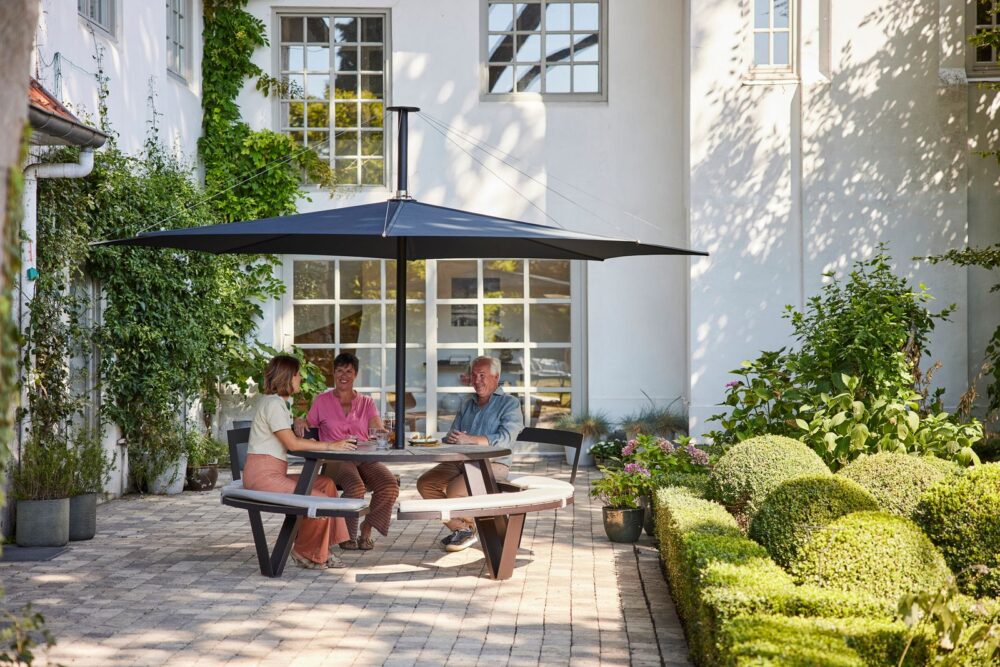
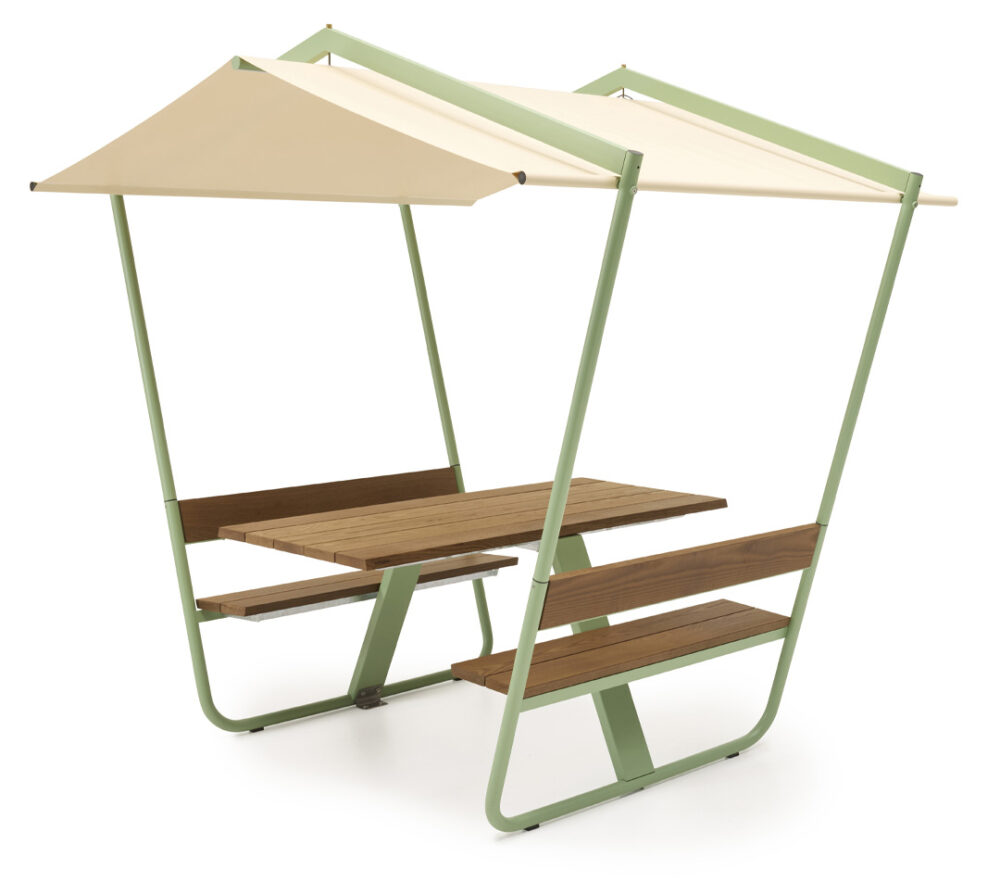
Local Precision, Global Reach, and Design with a Conscience
Extremis doesn’t manufacture in-house. But it keeps production tightly controlled: 80% of its components are sourced within an hour of its Belgian headquarters, and 99% within Europe. This proximity ensures material quality and shortens supply chains.
Extremis began using FSC-certified wood as early as 1994, just one year after the certification was created. Its Picnik collection (2002), designed with Xavier Lust, exemplifies this thinking: sculptural picnic sets formed from a single aluminum sheet with zero material waste—elegant, efficient, and enduring.
The company’s global presence expanded significantly in 2018 when it formed a strategic alliance with Steelcase, the American workplace design giant. This move catalyzed rapid U.S. growth, led by Wynants’ son, Thomas, and his American wife Ashlee, who now act as the brand’s ambassadors across the States. The U.S. is now Extremis’ fastest-growing market, followed closely by Japan.
Recent launches continue to fuse cultural reference with modular logic. The Panigiri table (2023), inspired by Greek communal feasts, is fully reconfigurable and customizable—earning it a gold award at NeoCon and a finalist nod for innovation. In 2025, Extremis unveiled Cabrio at Salone del Mobile, a two-seater with a convertible sunshield, dry cushion storage, and built-in functionality for objects and drinks.
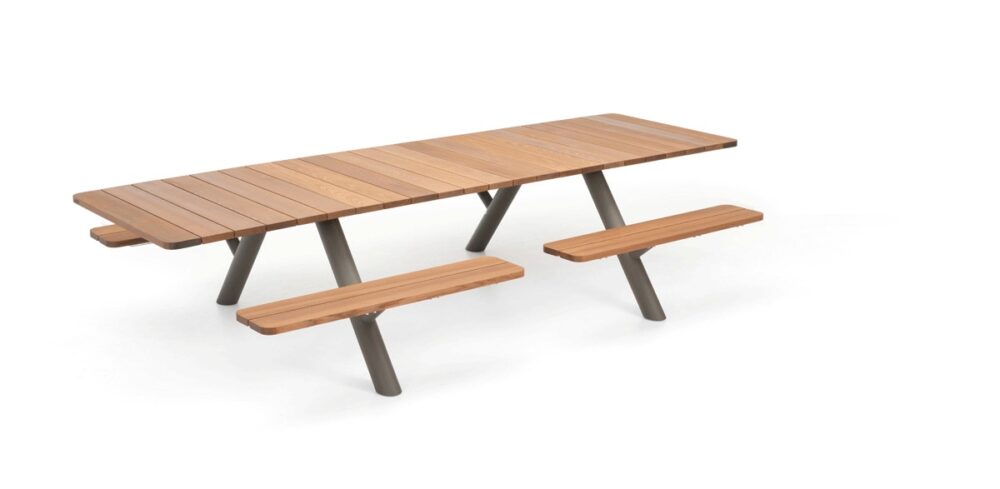
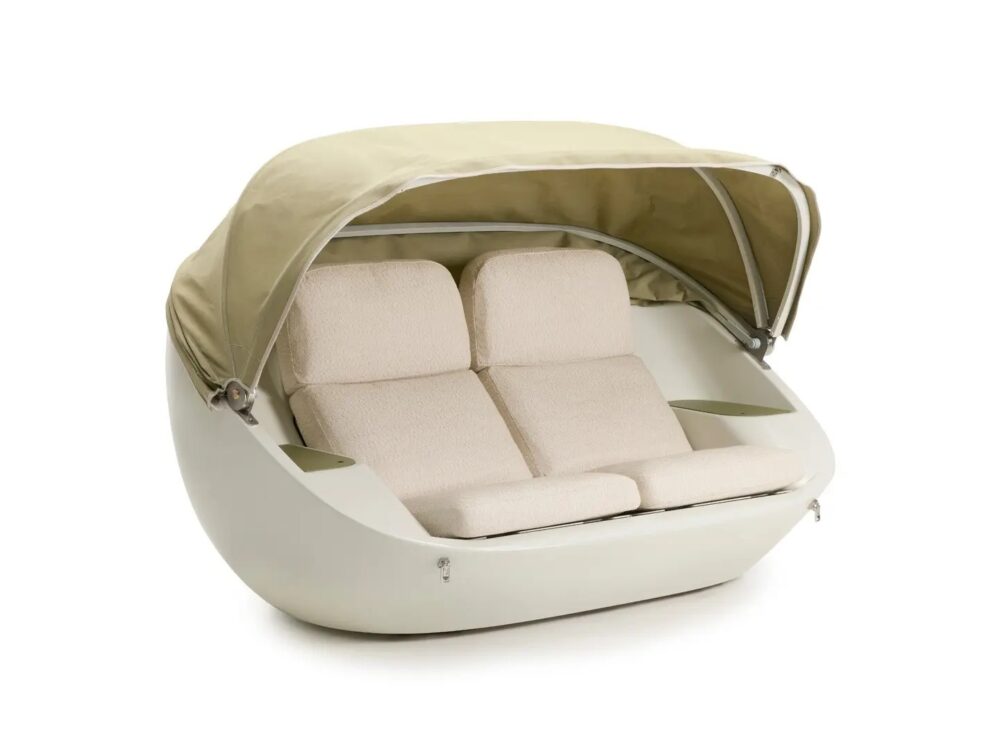
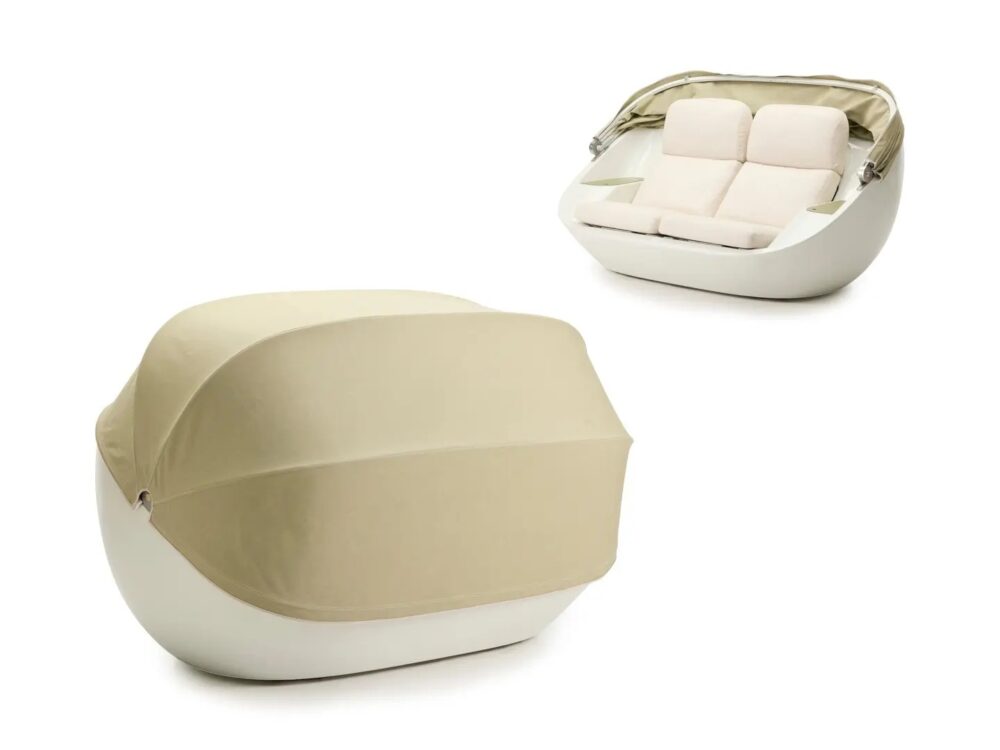
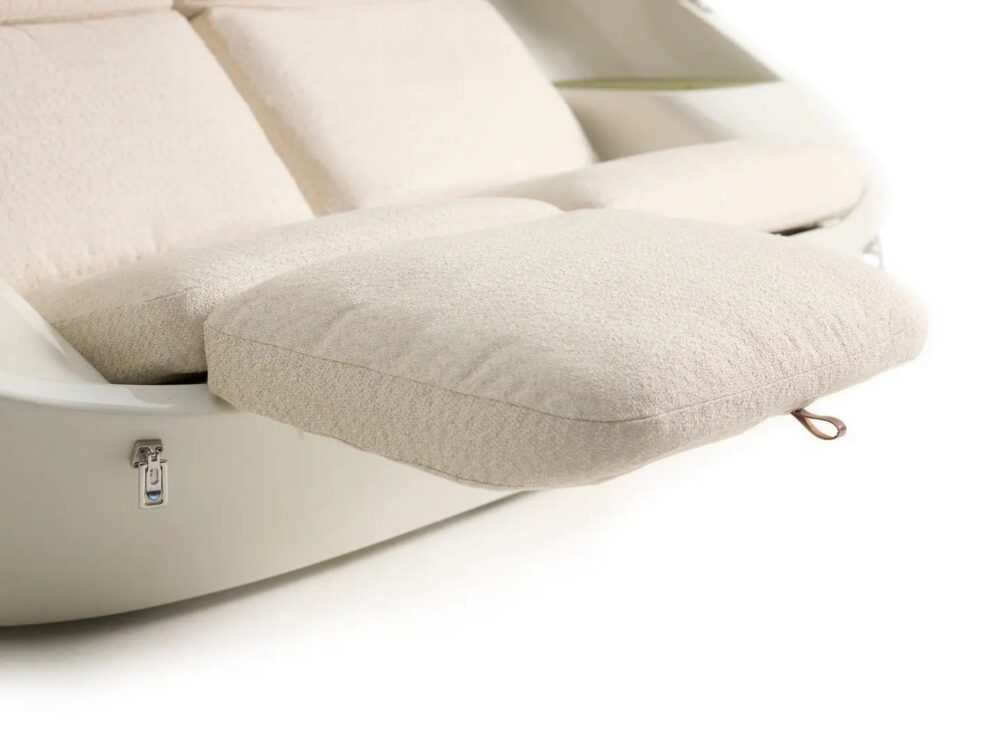
Multifunctional Spaces, the Future of Living
There is no lack of ideas for the future at Extremis.
“The world is changing, and the way we live is changing as well. More than 50% of us live in urban areas, and, according to the UN, that number will be between 70 and 80% by 2050. We will have to rethink our apartments. Not everyone will have enough space to receive guests, for example, and you might not have the space to accept a living room that is not multifunctional. Multifunctionality will become more and more important,” says Wynants.
Hence the significance of the collection Kosmos (a sofa, a table, and a chair) and of Sol+Luna, a sunbed that also works as a bench. Promoting an intelligent and efficient use of space, they reinforce Extremis’ belief in offering solutions rather than just furniture.
